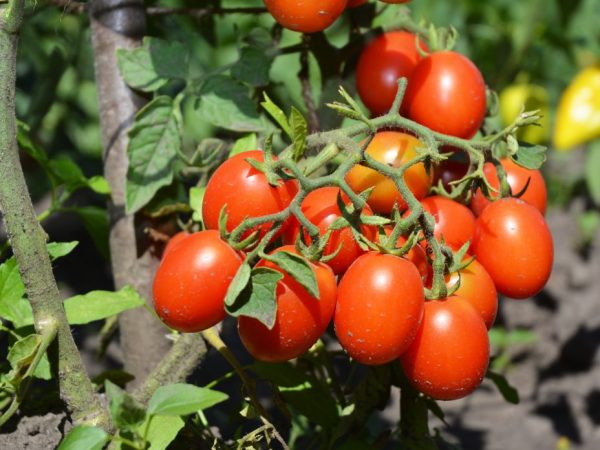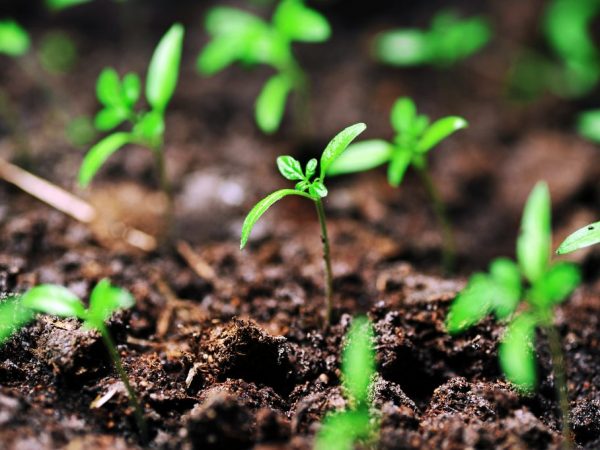Characteristics of tomatoes Cherry Ira f1
Tomatoes are a unique crop that, with their beneficial properties and taste characteristics, compensates for some of the difficulties of growing. As soon as the "summer" season begins, vegetable growers have a question: what seedlings should be purchased this year? For those who like small fruits, the Cherry Ira tomato is perfect.

Characteristics of tomatoes Cherry Ira f1
Characteristics of the variety
The Cherry Ira tomato variety is the result of the hard work of Russian breeders who have tried to create a crop suitable for growing both in greenhouses and in open areas. The f1 mark in the name of the plant, once again confirms the high quality of the fruit.
According to the characteristics, the tomato of the described variety is a hybrid, medium-sized, highly productive crop. The plant is included in the category of "indeterminate", that is, those in which the growth of the main stem is unlimited, therefore, with a stable temperature background (in a greenhouse), it can grow for 9-12 months.
Description of the bush
The official description says that the average height of the plant reaches 85-90 cm, in rare cases the Cherry Ira f1 tomato reaches 1 m. The bush is moderately spreading, the leaves are medium-sized, rich emerald color. The plant belongs to the standard type, which tolerates various diseases well.
Description of fruits
The general characteristics already tell the grower that this is a worthy variety that is suitable not only for pickling and whole-fruit canning, but also for further processing into juices. Tomatoes have the following description:
- The fruits are ovoid, they ripen in clusters of 6-10 pieces each.
- Initially, their color is light green, during ripening they acquire a bright red hue. In rare cases, "Cherry Ira f1" takes on a slightly different color and becomes crimson-scarlet.
- The pulp is moderately dense, juicy, aromatic, with a small amount of seeds, the dry matter content is 4-6%.
- Since these are small fruits, their weight is appropriate - 30-40 g.
- They are very rich in vitamins and other useful substances, therefore, fresh fruit consumption is recommended.
- Productivity: if you carefully monitor the development of the plant and follow all the necessary care rules, you can collect up to 4 kg of tomatoes from 1 bush. If for 1 sq. m, plant 3 bushes, the vegetable grower receives 11-12 kg of fruit. This is a fairly high figure for the Cherry variety.
The harvested crop perfectly tolerates transportation and can be stored for a long time. This feature is initially good for those who grow a product for sale.
Growing features
If the gardener plans to get a good harvest of the crop, he needs to prepare in advance everything necessary for planting seedlings. The plant has one specific feature: if it is improperly looked after, the tomato will lose its taste.
Planting seeds
Seeds can be planted in the second half of March.If you soak them in a growth stimulator before planting, the plant will develop much faster.
The soil into which the seeds will be planted also needs preparation. The best solution is to additionally fertilize it with organic and mineral substances. For sowing, small depressions are made, which are irrigated with water. To maintain the temperature balance, the container is covered from above with a film.
Sprout care

The sprouts need lighting and temperature maintenance.
The appearance of the first shoots indicates normal development, and also that the seedlings need good lighting. To do this, the container can be moved closer to natural light (windowsill). If the weather is cloudy, fluorescent lighting can solve the problem. The ambient temperature should be 17-20 ° C, only under such conditions the sprouts will develop without deviations and, as a result, will give a good yield.
Transplanting
As soon as the leaves appear, you can start preparing the soil in an open space.
For better adaptation and to prevent diseases, the soil is treated with special fertilizers. After that, picking begins. This is a simple procedure during which the plants are seated in separate containers to strengthen the root system.
Landing is performed only when the weather has already stabilized and there are no strong temperature jumps. This hybrid does not tolerate freezing, so you should worry about preserving the bush in advance. 3 plants are planted per 1 sq. m. The gardener forms a bush in 2 stems, the branches need a support.
Fertilizer
Fertilizers should be applied during the period of intensive growth. This culture responds well to complex feeding. During fruiting, it is better to use organic matter, because it does not have a negative effect on tomatoes.
Watering
Since Cherry Ira tomatoes are recommended for cultivation in the southern regions, which are characterized by drought, you need to know some watering rules:
- It is best to irrigate the plant in the evening. If you do this in the morning, water falling on the leaves will cause sunburn.
- The bushes should not be heavily flooded, because the resulting humid environment will be ideal for the development of bacteria.
Diseases
The crop has good disease resistance but is subject to Black Spot attacks. Another dangerous disease for Cherry Ira is top rot of fruits. It is fungal in nature, so it spreads very quickly throughout the plant.
Prophylaxis
In order to get rid of the disease, it is necessary to reduce watering, treat the plant with a solution of calcium nitrate.
If a grower grows tomatoes in a greenhouse, the room should be regularly ventilated to prevent the spread of fungal spores. If the bush began to destroy the moth, nightshade miner, sawfly, use "Bison" and "Lepidocide".
Conclusion
To make the yield of tomatoes happy, you need to make an effort. Compliance with all rules, incl. watering regime and temperature are the key to successful crop cultivation.


